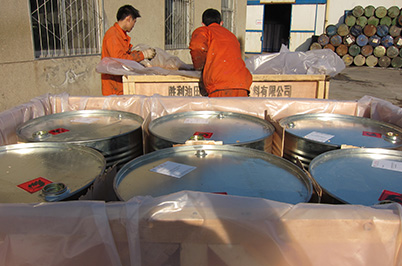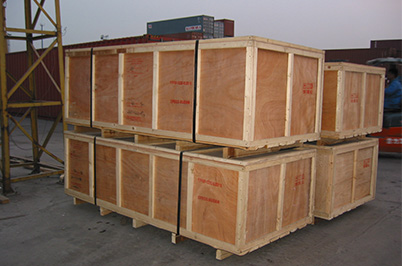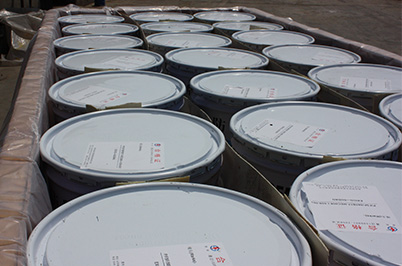PRODUCT NAME SLH42 Epoxy Wear-resistant Paint
BRIEF Two Pack High Build Can be coated Self-curing Epoxy Coating
FEATURES
-High solid
-Good cure properties of low temperature
-Excellent abrasion resistance when fully cured
-High pressure airless spray
RESISTANCE GUIDE
HEAT RESISTANCE Up to 140℃ dry heat
WEATHERABILITY Some chalking and yellowing will occur with exterior exposure, however this will not detract from the resistance properties of the coating
SOLVENTS Resists splash and spillage of most varsol, refined petroleum products and most common alcohols
ACIDS Suitable for splash and spillage to mild acids
ALKALIS Suitable for splash and spillage to strong alkalis
SALTS Excellent resistance to neutral and alkali salts
WATER Excellent resistance to immersion in fresh and salt water
ABRASION Good when fully cured.
USES: Widely used on deck tank surface, inner wall of the cabin,and other steel structure,concrete construction.
TYPICAL PROPERTIES AND APPLICATION DATA
COLOR Color
DENSITY 1.4g/ cm3
SOLIDS BY VOLUME 60%
SOLIDS BY WEIGHT 80%
SPREADING RATE 2.9 m2/kg (150um DFT)
DRYING TIME(23℃) Touch 4 Hr Handle 24 Hr Full cure 7Days
OVERCOAT INTERVAL(23℃) Min 8 Hr Max 7 Days
STORAGE at least 12 months (dry, cool and under cover )
FLASH POINT 26℃
PACKAGING Part A: 21kg Part B: 3kg
MIXING RATIO (m/m) Part A : Part B=7:1
CURE TIME(23℃) 10min
POT LIFE(23℃) 4 Hr
DIRECTIONS Before using stir or using dynamic mixer mixing two components completely, Just mix a good raw material and mixing of raw materials before can not be together. Rate of cure will vary depending on temperature and other factors such as ventilation, film thickness, humidity, thinner. The temperature of stir will >15℃, otherwise thinner should be added for needed viscosity after stir.
The temperature of stir will >15℃, otherwise thinner should be added for needed viscosity after stir. Overmuch thinner will lead sag and slow cure rate, thin film. Practical spreading rates may be reduced 5—25% for wastage of different application conditions.
APPLICATION
STEEL: Steel surface must be prepared by abrasive blast cleaning to ISO Standard Class Sa2.5 or power tool cleaning Class St3. Primer surface must keep dry and clean. The primer surface of damage, wedding and rusting must be prepared to Sa2.5 or St3. Zinc salt on the primer must be removed by abrasive or fresh water blasting.
Don’t apply at air temperature below 5℃ or above 40℃. Don’t apply at relative humidity above 85% or when air temperature is less than 3℃ above the dew point.
Don’t apply if there is fog, rain, snow or strong wind.
BRUSH/ROLLER: Suitable for small areas only. Apply even coats of the mixed material to the prepared surface. Thin if necessary with up to 0-15% with Epoxy Thinner X-2. Additional coats may be required to attain specified thickness.
CONVENTIONAL SPRAY: Thinning is not normally required, however 0-15% of Epoxy Thinner X-2 can be added.
AIRLESS SPRAY: Thinning is not normally required, however 0-5% of Epoxy Thinner X-2 can be added. Pump ratio is 32:1 or 45:1 and fluid tip is 0.43-0.48 mm.
Overcoating: Aged coating should be tested for lifting by a method such as ‘X’cut or crosshatch methods. If it lifts, remove it. The surface must be free of oil, grease and other contaminants.
Previous coat: Zinc Rich Epoxy Primer, Anticorrosive Epoxy Primer
CLEAN UP: with Epoxy Thinner X-2
SAFETY: Pay attention to the safety precautions before and after using this product. Users should comply with the provision of the respective country or local government. It’s dangerous or deadly to eating it. To avoid inhalation of thinner steams and spray mists.
Use protective wears correctly; the skin and eyes should avoid contacting it. Use with good ventilation. This product is flammable. All sources of ignition must be eliminated in, or near the working area. DO NOT SMOKE. Fight fire with foam, CO2 or dry chemical powder. On burning will emit toxic fumes.
Notes: The data in the manual is get from standard experiments and may be vary from different conditions in use. Please refer to the latest manual if the data is altered and we would not inform specially.





